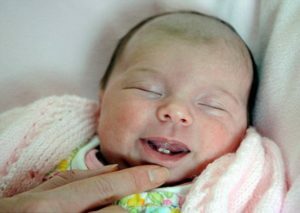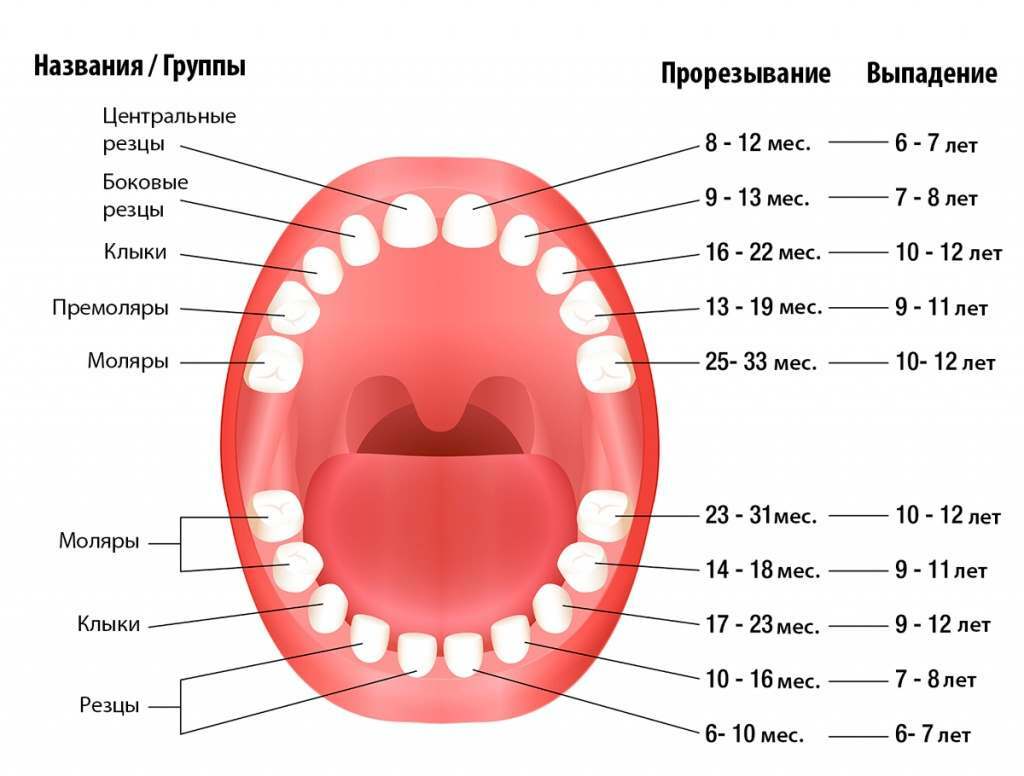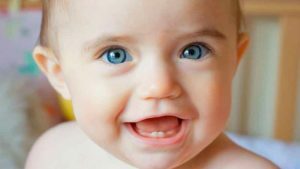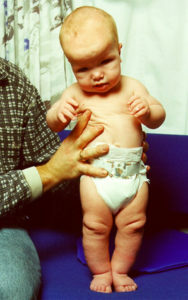 Most children are born without teeth, they do not need them, because the baby eats only liquid food. Usually the first teeth of a child are cut in 6 months. Sometimes they appear 3-4 months earlier or later.
Most children are born without teeth, they do not need them, because the baby eats only liquid food. Usually the first teeth of a child are cut in 6 months. Sometimes they appear 3-4 months earlier or later.
But, very rarely, one child of 4-7 thousand first teeth are visible at birth or erupted during the first 30 days of life. They are called natal and neonatal. According to statistics, in newborn girls this phenomenon is more common than in boys.
Contents of
- Reasons for teething in a newborn
- What are early teeth and how dangerous they are
- Complete and spare natal teeth
- What is the danger of an early eruption
- What if the baby was born with teeth?
- Opinion and predictions of
- physicians What people say in
Reasons for teething in a newborn
If a newborn has teeth in the mouth at the time of birth, then they are called natal. Neonatal appear in the period about a month after birth.
Most often, a child can be born with incisors in connection with any events occurring during a woman's pregnancy. In most cases, the causes of early eruption are absolutely safe for the newborn, but there are unpleasant exceptions.
The main reasons are:
- maternal malnutrition during pregnancy;
- insufficient content of vitamins and trace elements in the body of a woman during the period of gestation;
- surface location of primary tooth sources;
- high fever and other serious infections of a woman during pregnancy;
- congenital diseases;
- action of toxins;
- ecology.
The timing of the appearance of teeth in children can be influenced by factors related to the environment and the course of pregnancy of the mother. For example, eruption occurs later than the prescribed time in preterm infants, or who received intracranial birth trauma. Also, the eruption in children, whose mothers, while bearing the fetus, was subject to toxicosis or Rhesus-conflict.

Diary of the teething sequence in the child
Specialists note that the violation of teething occurs in case of serious illnesses or frequent ARI, rejection of the breast and pathology of the pituitary gland.
What are early teeth and how dangerous they are
Newborn teeth differ from regular dairy ones in that they have an inferior structure. They quickly grind off and have a soft surface. Such teeth usually do not have a root, they keep in the gum due to its tissues. The crown of the natal and neonatal teeth can be shell-shaped or dense. 
After examination of neonatal and natal teeth, they are classified according to Hebelling:
- crown is shell-shaped, has no root;
- is a dense crown, the root is either not, or it is very small;
- break through the acute edge of the incisor through the gum;
- tooth is not visible, but palpable in the gum, gingiva swollen.
Usually, the natal and neonatal teeth appear in place of the lower incisors.
Complete and spare natal teeth
The baby's natal teeth can be complete or spare.
Complete are usually called teeth, which appeared even during mother's pregnancy. They have a weak structure, easy to grind off and quickly deteriorate. A newborn can injure the oral cavity with these teeth. Complete incisors can harm not only the baby, but also his mother. The teeth are very sharp and this can cause a woman a painful feeling while breastfeeding. Often they fall out before 4 years.
Second type of natal teeth are spare. In the infant during the period of intrauterine development, a second row of baby teeth can form. Such teeth usually fall out themselves during the first month of life of the baby. However, if this does not happen, they are removed. After that, the normal milk teeth are cut in the correct time. Spare incisors can also provoke unpleasant sensations in the mother and baby.
What is the danger of an early eruption of
In addition to the discomfort that natal and neonatal incisors can bring to a baby and mom, they can be the result of some serious syndromes. Therefore, a very important point is a thorough examination of these teeth.

Child with Sotos syndrome
Early eruption may be a symptom of one of the following syndromes:
- multiple steatocystoma;
- Hallerman-Streiff syndrome;
- Robin Syndrome;
- Sotos syndrome;
- Ellis-Van Creveld's syndrome;
- cleft palate;
- congenital pachyonihia.
An experienced physician will be able to determine whether teeth are a symptom of a dangerous disease, and also to exclude it if the baby is healthy. The probability of identifying one of the above syndromes is very small. Therefore, parents should not be afraid, but also to neglect an examination of the early teeth is also not worth it.
Doctors in the case of the birth of an infant with natal or neonatal teeth advise them to remove, as they can cause injury to the lower surface of the tongue when sucking. Near these teeth can form a cyst, which often disturbs the baby and can cause suppuration. The cyst in this case is also removed.
Do not worry about the remote teeth, because approximately 6-7 years instead of them the root tooth will cut through. The kid needs only to undergo regular examinations with the orthodontist, who will control the bite of the child. Also, consult a specialist before the appearance of a permanent incisor.
What if the baby was born with teeth?
If the mother noticed a tooth from her baby, the first thing to do is to contact an experienced doctor: a pediatrician or a dentist.
Inspect the baby in several stages:
- First of all, the doctor examines the shape and color of the teeth, and determines how much they move in the gum. In some cases, the doctor may prescribe an X-ray. In case the cutter does not have a root, it must be removed, as it will soon fall out, and the child can choke on it.
- The doctor then examines the entire oral cavity of the newborn, to detect damage and inflammation.
- After the examination, the doctor prescribes tests and the passage of other specialists who will be able to check the presence of dangerous syndromes. The doctor needs to find out the reason that caused the abnormal appearance of the baby's teeth even during the intrauterine period or in the near future after birth.
- Based on the information received, he must decide whether an additional examination is necessary. The most important thing is to conduct this stage of diagnostics in a timely manner in order to help the newborn baby in a qualitative and effective way.
- After the examination, the doctor must make a verdict - is it necessary to remove the teeth in a particular case.
Natal and neonatal incisors are to be removed if they are extra: staggered, have a weak structure and sharp edges that can injure the baby. If such teeth are not removed, they may accidentally fall into the respiratory tract of the baby.
When the natal teeth do not affect the bite of a child, they have a root and hold well in the gum, they do not get removed. Care for these teeth should be carefully, because they are weaker than ordinary dairy and in the first place undergo caries. It is enough to clean the teeth twice a day with a soft toothbrush and baby paste.
Opinion and Forecasts of Doctors
In most cases, no unpleasant consequences for a baby born with teeth are expected in the future. If the teeth have not been removed, correct care and timely visits to the dentist are important.
In the case where the teeth have been removed, it is also important to observe the orthodontist to monitor the formation of the right occlusion in the child.
With these simple rules, a child born with teeth will not be different from the rest of the children.
What people say in people
There is a sign in people, if a baby was born with incisors, it provides him with good health and happiness in life. It is also believed that such children will be brave, will be able to fight back and stand up for themselves.
Another superstition is the opposite and promises a poor health to the baby. It is believed that these children will not have enough strength in the future, as early teeth were taken away.
Do not be afraid and worried if the child was born with one or more teeth. This phenomenon has long been studied and in itself does not carry in itself any danger to the health of the baby. It is important only to timely consult a doctor and follow his recommendations.
